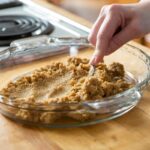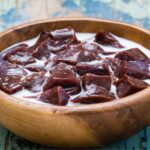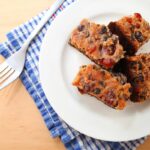Making the perfect pie crust can be a challenging task for even the most experienced bakers at times.
The hallmark of a great pie is a perfectly cooked, flaky, and light crust. However, having a perfectly cooked bottom is just as important.
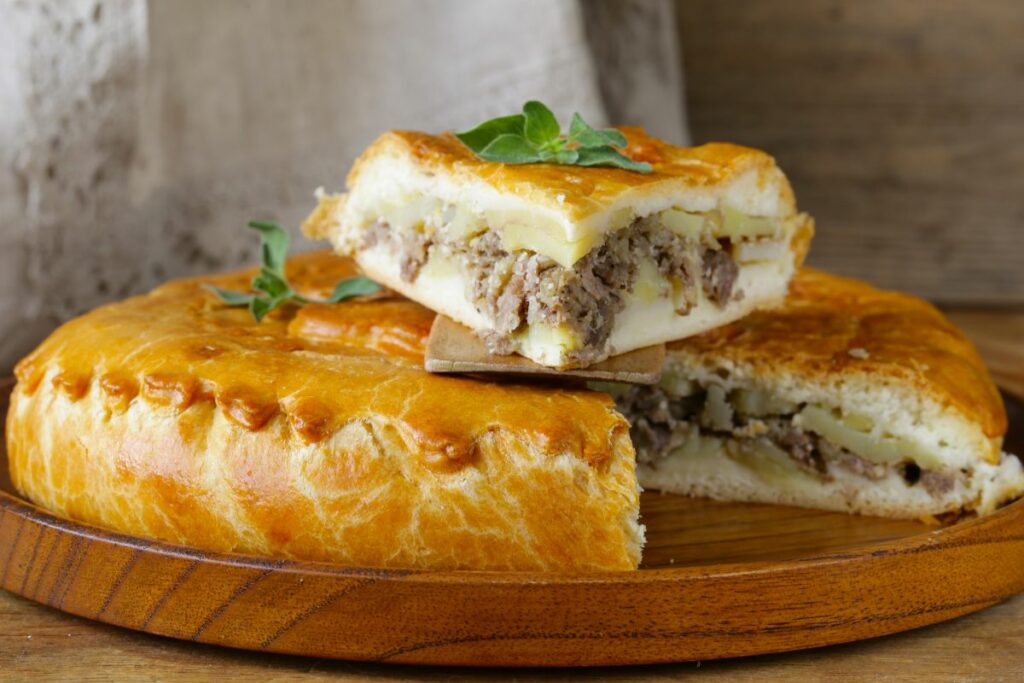
Unfortunately, due to the filling, the bottom crust can sometimes become soaked and soggy – ruining the entire dish.
Luckily for you, there are a few tricks you can use to make sure you get a perfectly cooked pie crust each time.
These simple tips should prevent your bottom pie crust from becoming soggy and soaking up all the moisture.
A damp or soft pie crust is one of the most common problems encountered by bakers. One way to prevent this is by keeping it in the oven.
For a crispy bottom, bake your pie blind. For a crispier crust, you can bake your pie on the lower rack.
To prevent sogginess, you can coat the bottom crust’s surface. Here, you can use a slightly beaten egg or a layer of corn syrup before adding to the filling – this acts as a seal.
When it comes to baking your pie, you can use crushed cornflakes or dry breadcrumbs to coat the top crust.
How To Prevent A Soggy Bottom?
Choose A Rack
Depending on which rack you use in the oven can help you achieve a crisper crust. For instance, keeping the pie on the bottom rack will help concentrate heat to the bottom of the pie – achieving a crispier crust.
Since the bottom of the crust has to hold all the liquid and moisture of the filling, this is a good idea regardless of whether or not you have soggy crust issues.
Bake It Blind
One of the most effective ways to ensure you achieve a crispy bottom pie crust is to blind-bake it.
The process involves baking the crust – either completely if you’re adding cream or custard, or partially if you need to bake the entire pie – before adding any type of filling.
To prevent the crust from bubbling up, you can use a piece of parchment paper to weigh it down before putting it in the oven to bake.
Use A Cookie Sheet
Placing your cooked pie crust on a hot cookie sheet will help liquefy the solid layers of the pastry’s fat – making the dough impermeable to any liquid from the filling.
Therefore, before preparing your pie, place a cookie sheet in the oven. Then, remove the sheet from the oven (don’t forget to use an oven mitt) and put your pie crust on top of it.
Then you can bake your pie as usual.
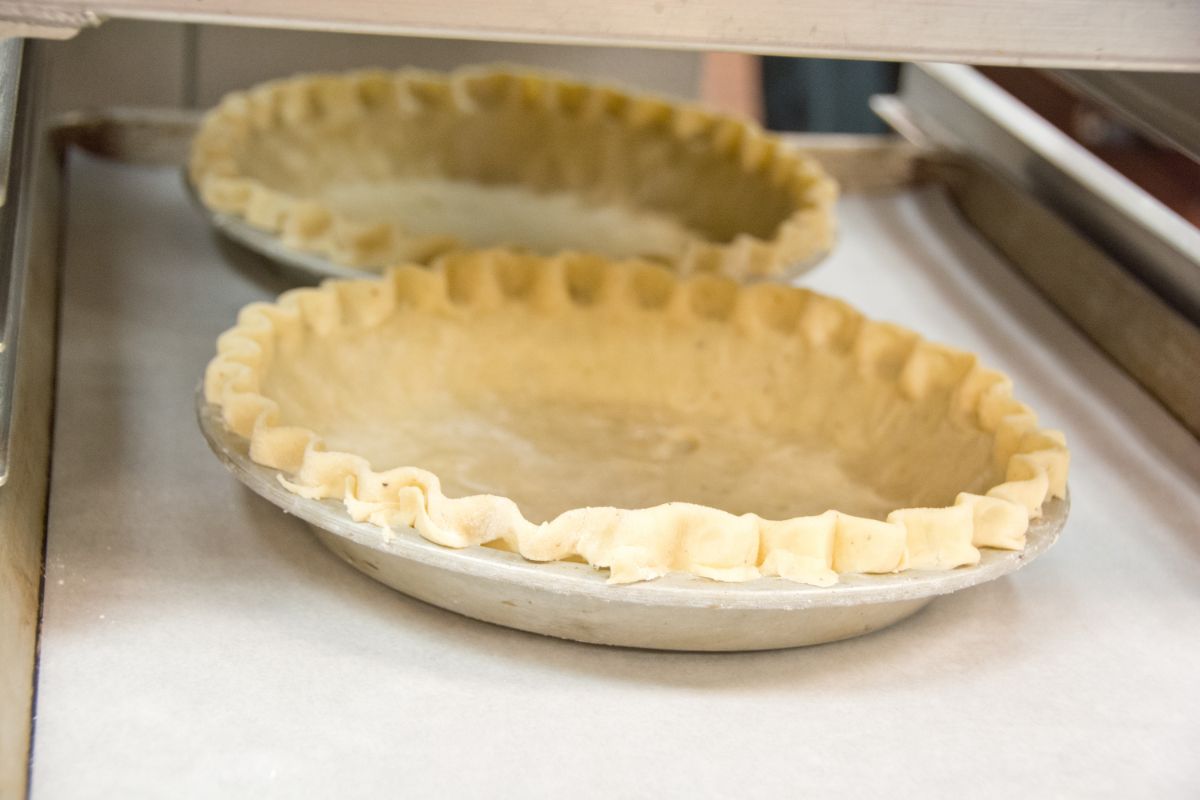
Brush The Bottom
Coating the bottom crust surface helps to create a barrier and prevent sogginess.
Before pouring in your filling, add a slightly beaten egg white or some corn syrup to seal the filling and pie dough for a flaky and crispy crust.
Add A Layer
By adding a layer of ingredients that won’t change the flavor of the pie, you can create a barrier between the dough and the filling.
Before filling and baking, you can sprinkle some crushed cornflakes or dried breadcrumbs – or any other cereal – to the bottom of the crust.
This will prevent the filling from turning the crust soggy.
Make A Thicker Crust
Since the bottom of the crust has to be sturdier than the top. Some extra heft is a good idea.
Here, you can roll out the bottom crust to be thicker than the top crust – this also helps to prevent the filling’s moisture from seeping through the dough.
Fill The Crust While It Is Hot
For a hot filling, make sure to set the crust before placing it in the oven – reducing the sogginess. Therefore, if the recipe calls for adding a hot filling, then make sure you don’t let it cool.
How Do You Know If Your Pie Crust Is Cooked?
Once the bottom pie crust firms up and turns slightly brown, it is almost ready.
There are various ways you can determine whether or not your pie crust is done. The most common way is by appearance.
Your pie crust should feature a light color and be smooth to the touch.
Another good indicator is the sweetness of the filling. Here, it should be less sweet than when it was previously made.
Lastly, there should be a faint smell of butter or pie crust sugar.
Why Should You Cool Your Pie?
There are various reasons why you should cool your pie. For instance, your pie crust needs time to harden – this can sometimes take a few hours or even days.
Additionally, the butter and sugar in the pie crust need time to be absorbed and melted into the dough.
Lastly, they need a longer cook time when compared to other foods since they have to be beasted before being served to your guests.
How Do You Fix An Undercooked Bottom Pie Crust?
Just like how you don’t want the bottom pie crust to be too done, you also don’t want it to be underdone, either. Luckily for you, it is easier to cook your pie for longer than fix overcooking issues.
For an underdone bottom crust, all you have to do is cover the top with foil – to prevent burning – and place it back in the oven at 425 to 450 degrees Fahrenheit for around 12 minutes.
As previously mentioned, you’ll want to place it on the bottom rack to allow the underside to receive the most heat.
Final Thoughts
A baker’s worst nightmare is a soggy pie crust bottom. However, cooking a perfect bottom pie crust can also be a hard task in itself.
Luckily for you, we have outlined everything you need to know about determining whether the bottom of your pie crust is done or not.
- How To Reheat A Cheesesteak - November 5, 2023
- What Are Three Must Have Kitchen Knives? - September 22, 2023
- How To Protect Edges Of Pie Crust - June 15, 2023



